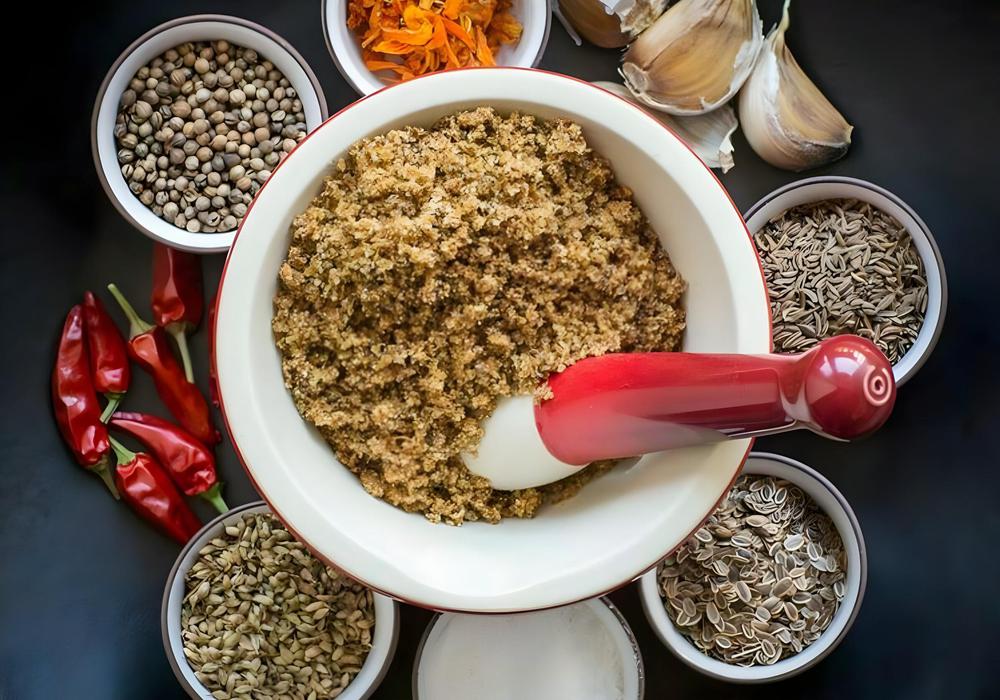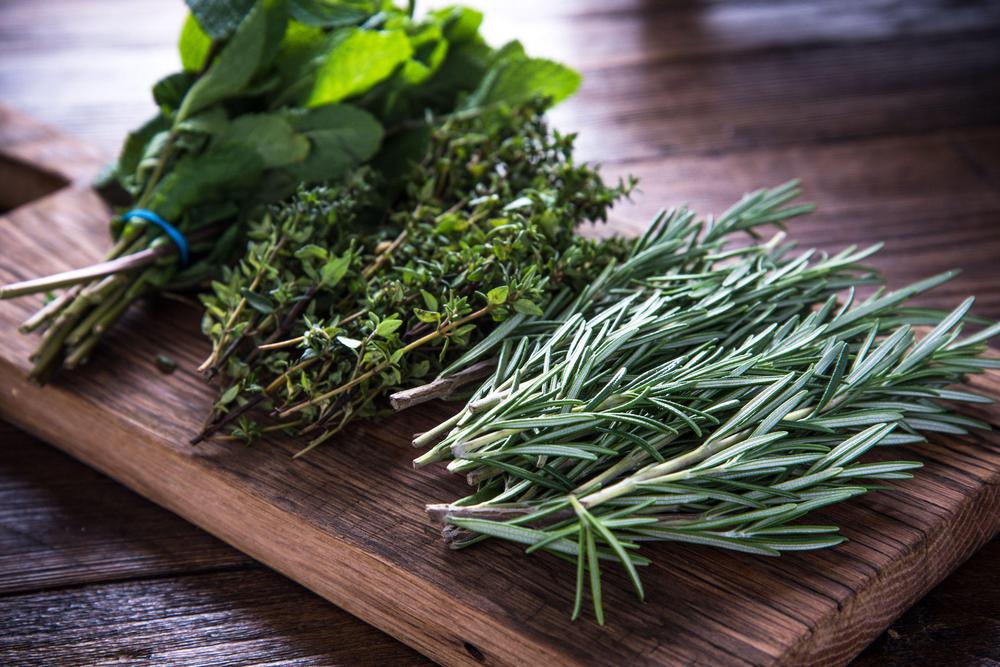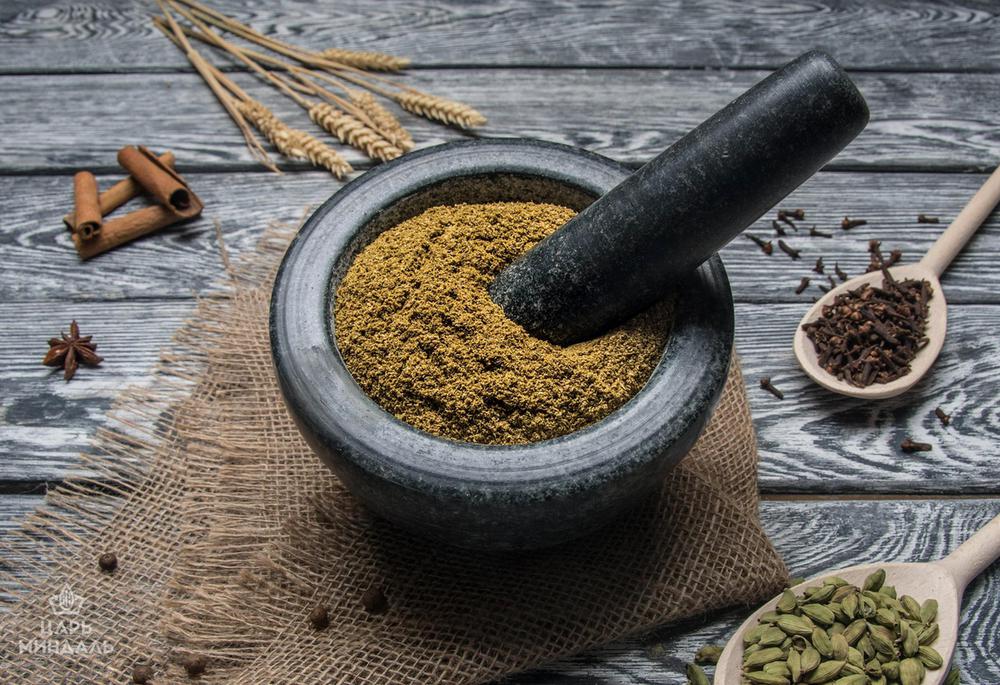Ajika, a Georgian chili paste, is a culinary staple in Georgia and Abkhazia, widely appreciated for its hot, spicy, yet subtly flavored profile. This article delves into the depths of Ajika's history, varieties, and culinary uses, offering a guide to its preparation and appreciation.
Originating from Georgia, Ajika (often spelled "Adjika") is more than just a condiment; it's a cultural emblem. This spicy paste, often used to enhance meat and fish dishes, boasts a rich array of ingredients including hot peppers, garlic, and a blend of fresh herbs and spices like coriander, basil, dill, and marigold petals. Ajika's versatility extends beyond its traditional uses; it serves as a fiery dip and an integral part of Georgian culinary traditions.
The Varieties Of Ajika
Ajika comes in several forms, showcasing the diversity of Georgian cuisine. The two primary types are red and green. Red Ajika, known for its vibrant hue, is typically made with ripe peppers, while green Ajika features unripe peppers, giving it a distinctive color and taste. Both varieties incorporate a blend of fresh and dry ingredients, creating a rich tapestry of flavors.
Cultural Significance
In 2018, Ajika's preparation technique was recognized as part of the Intangible Cultural Heritage of Georgia. This acknowledgment highlights the paste's importance not only in Georgian kitchens but also as a symbol of the country's rich cultural heritage.
Culinary Uses
Ajika's primary role in Georgian cuisine is as a flavor enhancer for meats and fish. Its robust and spicy profile makes it an ideal marinade, imparting depth and heat to dishes. Traditional Georgian recipes such as chakhokhbili, chashushuli, and sauces like satsebeli often feature Ajika. Additionally, its adaptability allows it to be mixed with mayonnaise for a unique sauce or simply enjoyed with bread and khachapuri.
The Making Of Ajika
The process of making Ajika is both an art and a science. The key lies in balancing the spiciness, which can be adjusted by varying the proportions of hot and sweet peppers. Georgians traditionally use a meat grinder for the perfect texture, though a high-quality blender can serve as a substitute. Essential to its preparation is ensuring the ingredients are thoroughly dry to achieve the desired consistency. The authentic Megrelian Ajika is notably spicy and tangy, with a potential variation in color based on ingredient ratios.
Recipes: Red And Green Ajika
Red Ajika —
Combining red peppers, sweet red peppers, and a variety of herbs and spices, red Ajika is known for its tangy and spicy taste. Its preparation involves careful drying of ingredients, deseeding peppers, and meticulous blending.
Green Ajika —
This variant is a mix of green chili peppers, sweet green peppers, garlic, and an assortment of fresh herbs and dried spices. Like its red counterpart, green Ajika requires overnight drying of ingredients and thorough blending to achieve its unique flavor.
Storing Ajika
Proper storage is crucial for preserving Ajika's flavors. It can be refrigerated for short-term use or frozen in small portions for longer shelf life. For immediate consumption, Adjika can be savored fresh, offering a burst of Georgian flavors.
Variations Across Eastern Europe
Ajika's journey beyond Georgian borders has led to intriguing variations, particularly in Eastern European countries like Russia, Ukraine, and the Baltic states. In these regions, Ajika often takes a form more akin to a tomato-based sauce, incorporating ingredients such as carrots. This version, while milder, draws comparisons to Balkan ajvar and deviates from the traditional Georgian pepper paste.
The Dry Spice Form Of Ajika
In addition to its paste and sauce forms, Ajika is also available as a dry spice in Georgian and Caucasus supermarkets. This dry version embodies the same flavors as the Megrelian Adjika but in a convenient, easy-to-use form. Just a few drops of water can transform this powder back into a paste, making it a versatile addition to grills, soups, and other dishes.
Ajika's Influence In Georgian Festivities
Ajika's role extends to Georgian festivities, particularly during New Year's Eve celebrations. A classic example is its use in roasting suckling pigs, where the pig is brushed with Ajika and then cooked in a traditional stone oven. This practice highlights Ajika's importance in Georgian culinary traditions and its integration into festive occasions.
Personal Uses And Variations
While traditional recipes offer a glimpse into Ajika's roots, personal variations and uses abound. Mixing Ajika with mayonnaise creates a delectable sauce, and experimenting with the balance of ingredients can lead to unique flavors. From a simple bread spread to an elaborate meat marinade, its versatility is limited only by one's culinary imagination.
Health And Nutritional Aspects
Ajika is not only a flavor enhancer but also comes with health benefits, thanks to its natural ingredients. The peppers provide capsaicin, known for its anti-inflammatory properties, while the herbs add essential vitamins and antioxidants. However, its high salt content, crucial for preservation, should be moderated for a healthier option.
Conclusion: Ajika, A Journey Of Flavors
Ajika, a Georgian chili paste, embodies the richness of Georgian cuisine and culture. From its traditional spicy Megrelian and tangy Abkhazian versions to the milder Eastern European interpretations, Adjika offers a journey through flavors and traditions. As a versatile condiment, it not only elevates dishes but also connects us to the culinary heritage of Georgia.

 Vegetarian and Vegan Delights in Georgian Cuisine
Vegetarian and Vegan Delights in Georgian Cuisine
 Georgian Street Food
Georgian Street Food
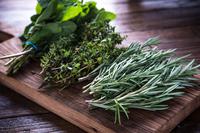 Georgian Herbs
Georgian Herbs
 Svanetian Salt
Svanetian Salt
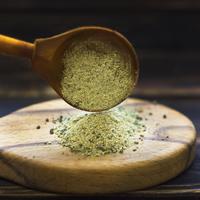 Utskho Suneli
Utskho Suneli
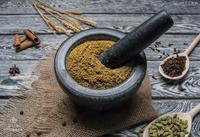 Khmeli Suneli
Khmeli Suneli
 Georgian Saffron
Georgian Saffron
